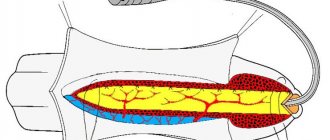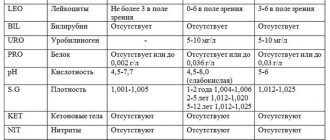Urologist → Patient
Ask a Question
TO THE SECTION EDITOR (reply within a few days)
13 February 2021 18:04
High incidence of sexually transmitted infections, combined with the lack of stable post-infectious immunity, which does not exclude repeated infections any number of times.
These are the reasons for the frequent asymptomatic course of sexually transmitted pathologies or the carriage of their pathogens.
STDs often have an atypical clinical picture with similar symptoms that accompany different infections.
As well as a tendency to mixed infections.
All this forces urologists and venereologists to need fairly accurate and quickly performed methods for examining patients for different groups of sexually transmitted pathologies.
An almost universal method of collecting material is a smear from the urethra in men or a scraping.
Having obtained samples of the epithelium of the urinary canal by scraping or a smear, a competent laboratory technician can perform a number of laboratory tests.
They help determine the nature and cause of the inflammatory process.
How is a smear taken from men?
For a more reliable result, the probe is inserted three to four centimeters into the urethra and slightly turned, after which it is removed.
The swab allows you to take a smear, the probe allows you to scrape.
The collected material can be used in several diagnostic tests with different time frames for obtaining results.
Many who are about to undergo examination by a urologist are interested in the question of how painful it is to perform a smear in men.
In terms of subjective sensations, taking a smear from the urethra in men is not the most pleasant experience, but it is quite tolerable.
And most importantly, it is absolutely safe and even useful from the point of view of quickly clarifying the nature of the pathological process and its culprit.
The faster the picture of the pathology becomes clearer, the more adequately and quickly treatment can begin, reducing the risks of complications or chronicity of the disease.
What is the reason
It is worth noting that after taking a smear for STIs, the presence of cutting pain when urinating occurs in almost all men. This symptomatology is natural, due to the strengthening of the sexual organ in the process of urine output. Pain may persist for 30 minutes. In the normal state of the body, these inconveniences can persist for up to 3 days.
Sharp pain when urinating after taking a smear in men occurs due to an inflamed area on the mucous membrane of the urethra.
If, after taking a smear from the urethra, it is painful for a man to pee, it means that at the time of the procedure the mucous tissue inside the genital organ was injured. When various microcracks occur in the urethra, inflammation forms, which can cause pain when emptying the bladder.
Urine itself has irritating properties due to the presence of various acids, salts and other elements in its composition.
If after 3 days the pain does not go away, you should inform your doctor about these symptoms.
How is a urethral swab taken from men?
A smear from the urethra in men (scraping for flora) is an unpleasant, but at the same time necessary manipulation. This procedure makes it possible to determine the presence of urological and sexually transmitted diseases. Smear… Details….
Smear preparation for men
In order for the results of the study to be as accurate as possible, before visiting a doctor it is worth carrying out a simple procedure to prepare for collecting biological material from the urethra.
It consists of the following points:
- Avoid drinking alcohol, fatty, spicy foods, and spices for three days,
- Avoid any sexual contact for several days before your appointment
- In order for there to be enough pathogenic flora in the urethra, it is necessary not to visit the toilet several hours before collecting biological material,
- Do not take antibacterial agents for a week before taking material for research.
If you suspect that the infection is hidden (which is quite common among sexually transmitted diseases), it will be necessary to take a number of provocative measures, for example:
- Eating fatty, smoked, spicy or salty food for dinner will aggravate the course of a particular disease that is in a latent form,
- Treatment of the urethra with a solution of silver nitrate,
- Taking a hot bath, bath or sauna before taking biological material,
- Drinking alcohol before visiting a urologist.
To ensure that neither the specialist nor you feel discomfort when taking a smear from men, it is necessary to thoroughly clean the reproductive organs the day before visiting the doctor.
In the morning, genital hygiene procedures are not required.
The use of local antiseptics, especially their introduction into the urethra, is excluded.
Features of the procedure
A urethral swab is prescribed to determine whether there are pathogenic microorganisms in the urethra.
Using a smear from the urethra, inflammatory processes of the genitourinary system are diagnosed.
Based on the results of the analysis, the doctor determines the exact composition of the microflora of the urethra. If inflammatory processes are detected, a specialist can test samples for specific types of bacteria and determine whether the patient is infected with sexually transmitted diseases.
A smear, among other things, makes it possible to detect fungal infections of the genitourinary system.
Male smear diagnostic options
- Smear microscopy
(flora smear in men) is a simple qualitative method in which the number of leukocytes, epithelial cells, and red blood cells is assessed under a microscope.
Epithelium in a smear in men should be found in moderate or small quantities, as well as mucus.
Leukocytes in a smear in men in quantities of more than five are evidence of inflammation.
Also, microscopy can reveal pathogens: Trichomonas, gonococci, yeasts, and so on.
Sometimes the smear has to be tinted using different techniques to better visualize different pathogens.
In addition to specific pathogens of sexually transmitted pathologies, saprophytic cocci can also be detected in a smear in men.
They, as well as large quantities of mucus in a smear in men, indicate nonspecific urethritis.
A smear is a universal qualitative method for determining the pathogen and a quantitative method for assessing signs of inflammation.
It allows you to navigate only in the volume of material that has fallen into the preparation on a glass slide.
That is, if the pathogen is present in other environments of the body or is not in the field of view, it can be missed.
But for initial orientation in space, smear analysis in men is quite suitable and affordable.
- Polymerase chain reaction
scrapings of the urethral endothelium (PCR smear in men) is already aerobatics.
Related to express methods (the result can be obtained on the same day when the material is collected)
On average, a response is received within the first three days.
Since using this technique they search for the genetic material (or its fragments) of a certain pathogen.
Therefore, the analysis is considered highly sensitive (the pathogen will not be confused with externally similar cells of another species) and extremely accurate (even incomplete cells will be found and appreciated).
- Bacteriological seeding is the cultural cultivation of colonies of pathogens.
This occurs on a nutrient medium that is optimal for them or universal for several parasites in resort conditions (at a certain pressure and temperature) for seven days.
The first preliminary growth results are assessed already by the fifth day.
A cultured smear test for infection in men gives a complete picture by the beginning of the second week.
In parallel with the calculation of colony-forming units, the sensitivity of overgrown pathogens to different types of antibiotics and antiseptics is also tested.
This further helps when choosing treatment tactics.
This is especially true in case of chronic persistent infection.
Unfortunately, sensitivity in a laboratory environment and in a living organism is not always identical.
- A fingerprint smear allows you to detect atypical cells.
They indicate abnormalities or transformations of the epithelium of the urethra or bladder (when atypical cells are washed into the lower urinary tract with urine).
A normal smear in men does not imply the detection of atypical cells.
Of course, urethral cancer is not a common occurrence, but oncological alertness has never bothered anyone, unlike careless carelessness.
Pain when urinating
The patient may experience pain during the smear procedure. In some cases, pain may indicate the presence of an inflammatory process in the body.
In a healthy person, discomfort occurs less frequently. Severe pain occurs if already inflamed tissues have been disturbed.
However, in some cases, pain occurs in healthy people because the physician is not careful enough to collect the sample for analysis.
The mucous membranes of any person are very delicate. A fairly weak physical impact can damage them.
Various external influences on the urethra can lead to the formation of microcracks in the mucous membranes. Upon contact with urine, the wounds become irritated and the patient complains of pain.
Attacks of pain when urinating are usually sharp. Discomfort can last up to three days and gradually decrease over this period.
If the pain continues longer or its intensity increases, you should seek medical help.
In order for pain after a urethral smear to last less and have low intensity, certain recommendations should be followed.
It is advisable to perform the first urination immediately after the analysis procedure. Urine passes through the urethral ducts and helps heal microtraumas.
Some patients try to postpone the unpleasant process, but they should completely empty the bladder to more quickly normalize urination.
Women may experience slight bleeding from the urethra. Therefore, you should bring a panty liner to your doctor's appointment.
Sexual contact should be avoided for several days after the smear test. It is advisable to completely eliminate sexual arousal, as it causes a rush of blood to the pelvic organs and increased pain.
The less spicy and salty foods there are in the patient’s diet, the less irritating effect urine will have on the urethra.
It is recommended to avoid underwear made from synthetic fabrics and give preference to soft cotton clothing with a loose fit.
Causes
In most cases, sensations of cutting and burning pain in the genital organ occur almost immediately. This symptomatology tends to intensify during urination. After completing this process, it gradually goes away, within about half an hour. Normally, this condition can last up to three days.
If a man has a smear taken from his urethra and it hurts him to write, this indicates that the mucous membrane of the urethra was injured during the procedure. Discomfort occurs as a result of the fact that the tissues have received microcracks, against the background of which slight inflammation has developed and swelling has appeared.
The biological fluid released during urination has strong irritating properties, since it contains various acids, salts and other elements. If the pain does not go away within 72 hours, it is recommended to seek help from a doctor.
What to do
Since every medical professional knows that a urethral smear in men hurts to pee, he can give recommendations on how to reduce the discomfort. However, not all doctors inform patients. Therefore, they have to independently look for ways to help shorten the recovery period.
To alleviate your condition, you need to follow these rules:
- During the first 20 minutes after the procedure, you must urinate;
- Over the next 48 hours, it is recommended to refrain from any intimate contact;
- It is better to avoid sexual arousal, because in a state of erection the pain will intensify;
- It is necessary to adjust the diet by excluding the consumption of hot, salty, spicy, fried and fatty foods;
- To speed up recovery, drinking alcoholic beverages is prohibited during the first three days after the procedure;
- A man should wear light and loose clothing made from natural materials so as not to provoke squeezing, pinching and allergies;
- It is imperative to maintain genital hygiene, since during the procedure residual urine that causes irritation will be eliminated.
After taking a smear from the urethral canal, for the first few days you will not be able to defecate as before. When urinating, it is recommended to release a few drops of urine first. These actions will cause pain and burning in the urethra. It is necessary to wait a few seconds until the symptom becomes less pronounced, and then finish the process.
Unfortunately, not all patients experience discomfort that goes away on their own within a few days. It may happen that pain and discomfort will be present for a long time. In this case, you need to consult a doctor who will check whether there is an infection and also prescribe painkillers.








